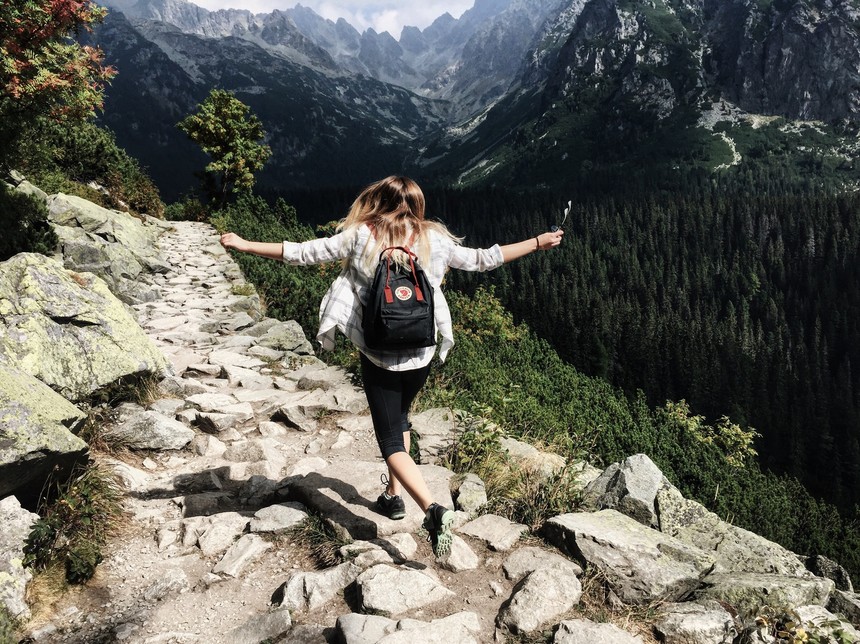tags:
Mountains |

Hiking is healthy, but only if you treat your body right while you're on the trail. One thing you don't want to neglect is hydration. Dehydration can have serious consequences, including heat stroke and hypothermia. Surprisingly, your body needs hydration even more during a cold-weather hike, because cold, dry air strips moisture away more quickly, according to the American Hiking Society. Keep plenty of water on hand and sip regularly, but when it's chilly, a warm drink such as beef bone broth can be comforting as well as good for you.
Quantity
To pre-hydrate, drink a cup or two of water, sport drink, or juice before starting your hike. The North Country Trail Association recommends drinking at least a quart of liquid per-hour while on the trail
Another way to measure is to sip about 10 ounces every 20 minutes. If you've had no symptoms of dehydration, you can check how you've done at the end of your hike by looking at your body weight – you should weigh about the same as before you left.
What to Drink
Plain water is the no-brainer. Bring enough in bottles, or if you're distance hiking make sure there are water stations on the trail or you have a way to purify water from natural sources.
Food and drinks with electrolytes--and those rich in potassium and sodium--help with rehydration. In addition to sport drinks, try tomato, orange and other citrus juices, and bananas. Salty snacks, if not excessive, can replenish sodium--thus the popularity of trail mixes containing nuts or pretzels. Caffeinated drinks such as soda, coffee or tea will deplete fluids rather than replenishing them. Alcoholic beverages should be avoided for the same reason.
Cold-Weather Beverages
Broth can be comforting in during a fall or winter hike, but more important, it has health benefits. Bone broth, trending among healthy eating circles, can protect your joints, increase bone strength, help you sleep better and supports your immune system according to Shape magazine.
For a long hike when you are packing food supplies, you'll want to bring bouillon rather than prepared broth, and making your own cubes can help you control the salt. Some sodium is good for hikers, but too much is not.
Look for recipes online for freeze-dried cubes that include seasonings that will please you when you're ready to start a day of hiking, or to sip while you are preparing dinner. Here is one example from Back Country Paleo.
Cold-weather hikers can also take along bottled water, and just keep it inside your coat to keep it from freezing. Even if you don't feel as thirsty when it's cold, you need to keep the hydration going.
Symptoms of Dehydration
It's conventional wisdom that by the time you feel thirsty, you're already getting low on fluids, so keep sipping that water to prevent dehydration. You'll also know you are getting low if your mouth feels dry and your energy begins flagging.
More serious symptoms include a headache, nausea, cramps and, according to the REI website, "the umbles: stumbling, mumbling, grumbling and fumbling."
Other signs include a lack of appetite, rapid heart rate, weakness and dizziness.
If you or a fellow hiker show signs of dehydration, don't keep hiking. Sit in the shade, or lie down with feet elevated, after sipping water with a little sugar or salt. Seek medical attention if the dehydration is severe.
Can you drink too much water while hiking? It isn't common, but over-hydration is possible. Just stick to about 10 ounces every 20 minutes or so, and you'll be good. Whether you like flavored sports drinks, juice or plain water, proper hydration will keep you in good health as you hike and you will enjoy the experience a lot more.


